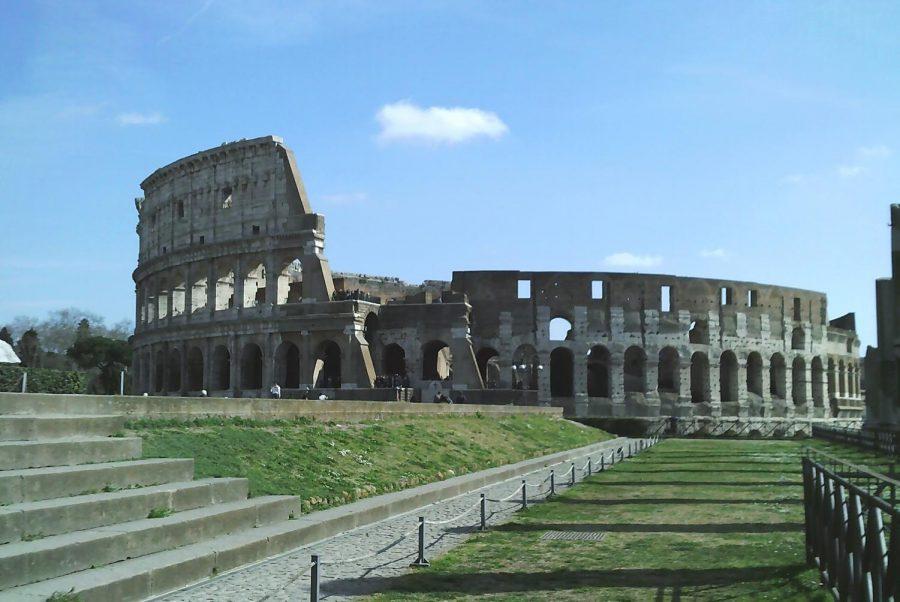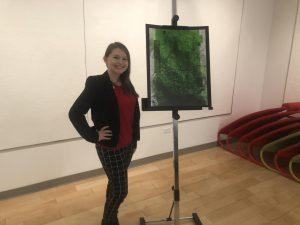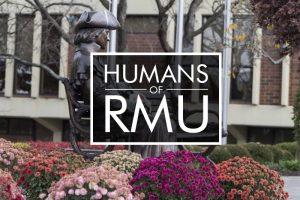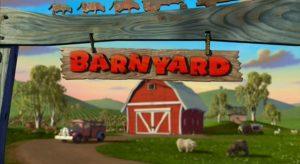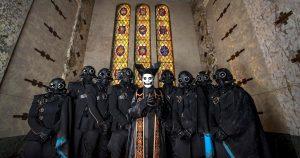Sentry Around the World – A Tour of Rome
Exploring the streets of Rome is an experience you don’t want to miss.
April 3, 2019
An overwhelming sense of peace is not what I had expected for my trip to Rome over spring break. Despite my initial thoughts, however, I soon found myself sitting on the rooftop garden of my hotel in the heart of Rome, wondering about the sense of calm that lies over the city and all that it does.
Whether it’s the respect for the great empire that came so long before or simply the character of the Italian people that makes the city come alive, Rome is not a tired city. Split between the past and present, the city founded in the ancient world is now in a battle between the old and new.
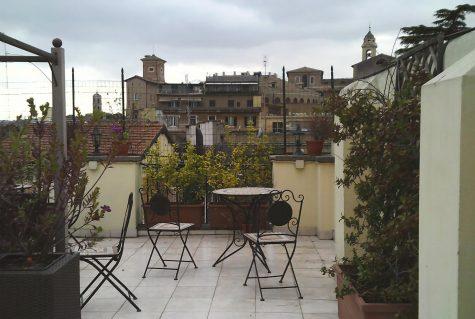
This city held a lot of firsts for me. It was my first trans-Atlantic voyage, my first time out of the country and my first taste of gelato. The last might have been the best.
Before coming to the city, I had pictured Rome as a modern city, burying its past and resurrected as a cheapened tourist attraction. The moment I stepped out of the airport, I knew this trip would be different than expected.
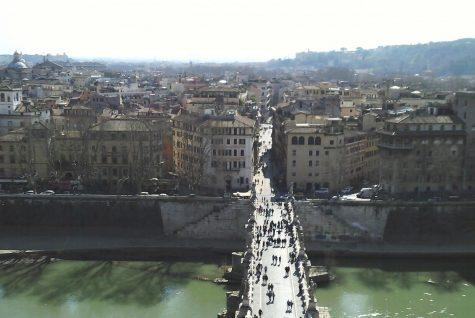
Rome’s countryside is sparse. The conifers resemble something from a savanna, with long tall trunks a tangle of branches at top. There are tall tufted clusters of grasses and miles of green rolling hills. Compared to the environment in the United States, the air was clean and refreshing.
The structures of the buildings immediately caught my attention. There is Medieval and Renaissance architecture along the roads, featuring low towers made of orange brick and clay tile roofs. Next to the historic architecture there were new high-rise buildings completely covered in glass.
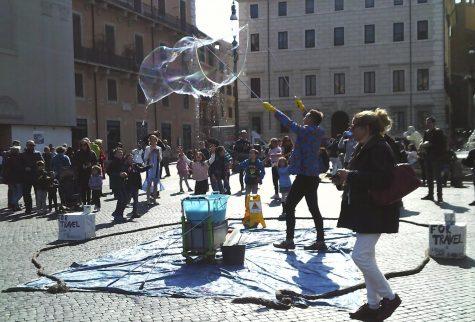
Rome is a complete dichotomy like this. Brand new sports complexes are next to state of the art tracks and soccer fields. Around the corner, there is a wired-in yard with chickens and a mutt dragging a bone.
The whole of the city is built like this, poverty mixed with wealth. It is not divided by a definitive barrier, but blended in an authentic way. Graffiti is not an ugly effacing of a building, but real art that the painters take pride in. They especially enjoy using “Ghostbusters” as an inspiration for their pieces.
Once in the heart of the city, its ancient past becomes more apparent.
When we drove by our first set of ruins, a hush fell over the van. They were massive and beautiful, with the orange brown brick flying overhead in large arches. Moss and grass grow into the structures, making them both intimidating and vibrant.
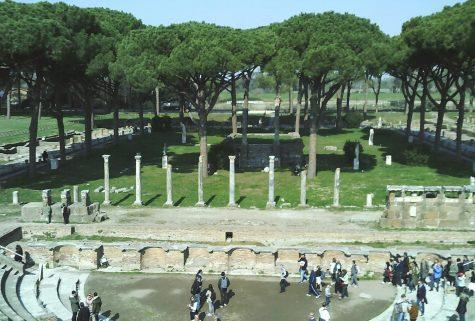
Another intimidating thing about Rome is the driving. Vespas and Fiats fill the cobbled streets, zipping past pedestrians and weaving around traffic. Only the cars obey the crosswalk and there are very few parking spots, forcing the smart cars to park parallel to the streets. Everything is so much smaller in Europe.
It was refreshing to realize this. Everything, including the portion sizes, are exactly the size they need to be. Nothing more, nothing less.
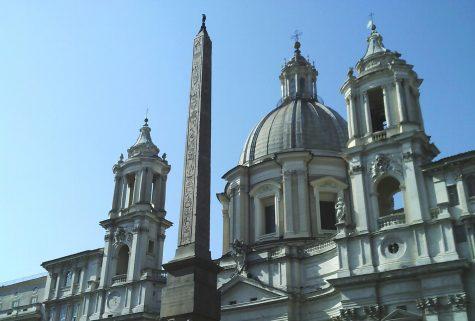
Each day was a new discovery, leading to a new learning experience. The dichotomy of Roman society, of old and new coexisting so closely, became more and more prevalent every day.
At the top of the Mercanti Di Traiano or the Trajan Markets, ancient Rome’s main marketplace and a massive ode to Roman architectural genius, there is a brand new yellow brick home attached. The residents tend their rooftop gardens every day, perhaps starting the morning by looking over the ruins of the markets, the Trajan Tower and the Alter of the Fatherland.
The last is more of an eyesore than a gem. The Victor Emmanuel monument, or as the natives fondly call it “The Typewriter,” is considered ugly from it’s excessive grandeur. While the rest of the city possesses a quiet and graceful beauty, this monument tries too hard to be something special.
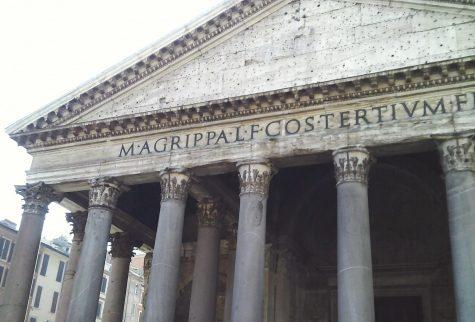
The next day took us to the Pantheon and the Castel de Sant Angelo. The Pantheon is another work of genius by the Romans. The hole in the ceiling was not a mistake, acting as a massive sun dial within the building.
As for the Castel de Sant Angelo, it was a castle built by an emperor as a mausoleum for his family. He built a castle to be buried in, although, it later served as papal apartments. Inside, the stairs are still original Roman steps. While it is quite a hike, the views from the top are worth it.
My favorite place of the whole trip had to be Ostia Antica. Its ruins are just outside of Rome, so getting there was a nice Metro ride on a sunny Sunday morning. For what was considered a small Roman town, its size was more like a city.
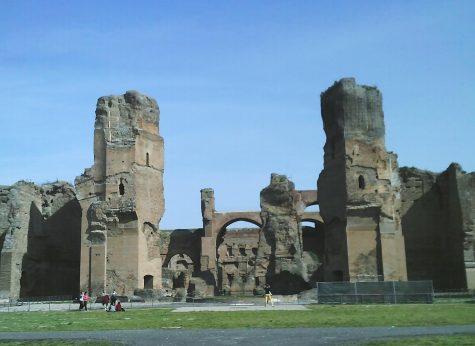
As we walked through the ruins, many of which are still intact, I remember thinking that the Romans had thought of everything but the internet. That feeling continued when we visited the Roman Forum, the Colosseum and the Baths of Caracalla over the course of the trip.
The Forum was another unexpected treasure, which is far too often overshadowed by the Colosseum next door. Palatine Hill and the gardens stretching behind the structure were a wonderland to a history geek like me. I wish I had had more time to explore and get lost in the greenery.
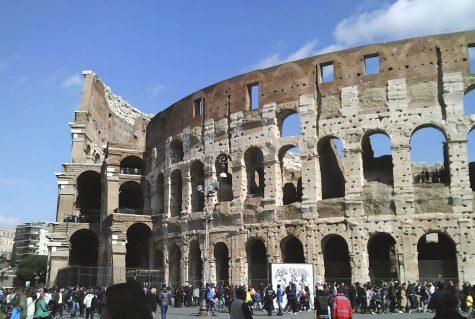
As for the Colosseum, it was the only thing that was exactly as big as I expected it to be. Yet, that does not make it any less impressive. I stood on the second level, looking over the arena and up into what is left of the stands, and I could hear the roar of the crowds of ages ago. The cheering, the crowds, the fighters, the energy, it is all still very much alive in the windy Colosseum.
The Vatican was also an interesting stop, but the only thing that caught my eye was the simplest art inside the cathedral: the La “Pieta.”
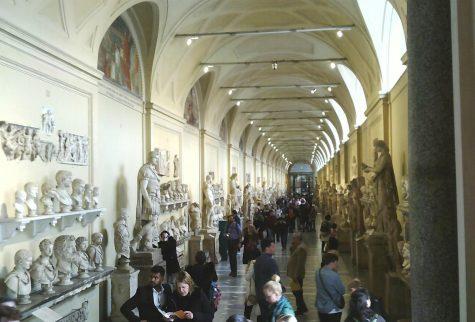
Why that beautiful, simple, white marble statue held more meaning to me than all the gold and grandeur of the cathedral, I do not know. Perhaps, to me at least, it was the only thing that was pure about that Church.
I could have left after seeing the La “Pieta,” but we stayed for the museums. Four hours after entering, we finally got to the legendary Sistine Chapel. Maybe I was just numbed by the grandiose nature of the rest of the collections, but I was not as awed as I had expected to be. It was nonetheless a wonderful thing to finally see in person. The colors are preserved so brilliantly with the details seeming to be three-dimensional.
The rest of our free-time was spent walking the city, finding little treasures in vintage stores, restaurants and local secrets.
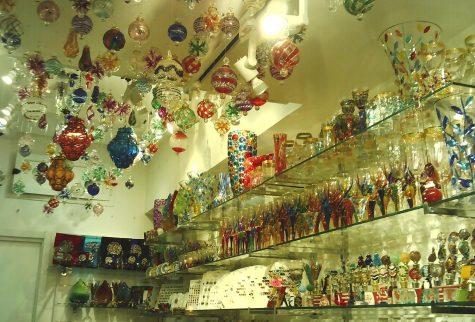
Walking around one night, a friend and I met a woman who sells ties with her husband. Originally from Stockholm, she now calls us her “Pittsburgh friends.” In talking to her, we learned about the only privately owned church in all of Rome: The Lady of the Arch.
The Lady of the Arch opens its doors at 6 p.m., with mass being held at 7 p.m. each day. After mass, it closes its gates until the next evening. In this church, I found tears in my eyes.
It is a such a small church, more of a room at the end of a quiet alley than a sprawling chapel, yet it demands your respect and pulls in your heart. The tiny domed ceiling is detailed and intricate, but somehow it manages to remain humble and quiet.
That night, I sat up on our rooftop garden with both my friend and my professor. As we told more and more about our discovery, I could feel the bubble of excitement welling up in my chest. We had found a hidden treasure in a city full of them.
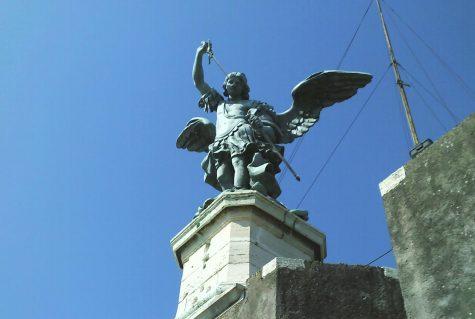
I began to realize that we were only scratching the surface of what Rome really is, which made it so much harder to leave. On my nine-hour flight home over the Atlantic, I had time to try and put some perspective to all that I had seen and learned — both about Rome and myself.
Being a history major, I had thought I had a good perception of what the ancient world was like. Almost everything I had imagined was wrong. These were not people who lived squalid and dirty lives: some of the world’s greatest minds existed in this time.
Their engineering and ingenuity are unmatched, similar to what we do today. The Roman architecture has been exposed to weather, natural disasters and wars, yet it still stands. Nothing that we have made has been that durable. We follow the belief that if it is old, we will just tear it down and make a new one. In contrast, the Romans built things to last. Their whole philosophy was of leaving a lasting mark on society.
More than this, life in modern Rome is both slow and fast at the same time. People move at a very laissez-faire pace. They live with an ideology of enjoying the moment and letting everything fall into place, which it generally does.
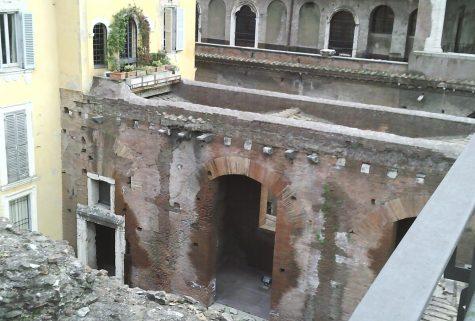
I remember feeling free and relaxed throughout the trip, as there seemed to be so many more hours in the day. It was almost disappointing when I stepped foot in the JFK Airport and my cellphone had coverage again. I loved not checking it all day or not having to worry about doing anything other than what I was doing in that very moment.
For me, this was an eye-opening experience. Had I not left the United States, I would never have realized what is wrong about how we live here. As much as I loved Rome, there were also some things that I found are so much better in America.
Never leaving the country will make you blind to what the world has to offer. It does not mean you have to love everything you do and see. It means that you have a chance to open yourself up to new experiences.
Take that chance. You will be surprised what you learn about the yourself and the world.



